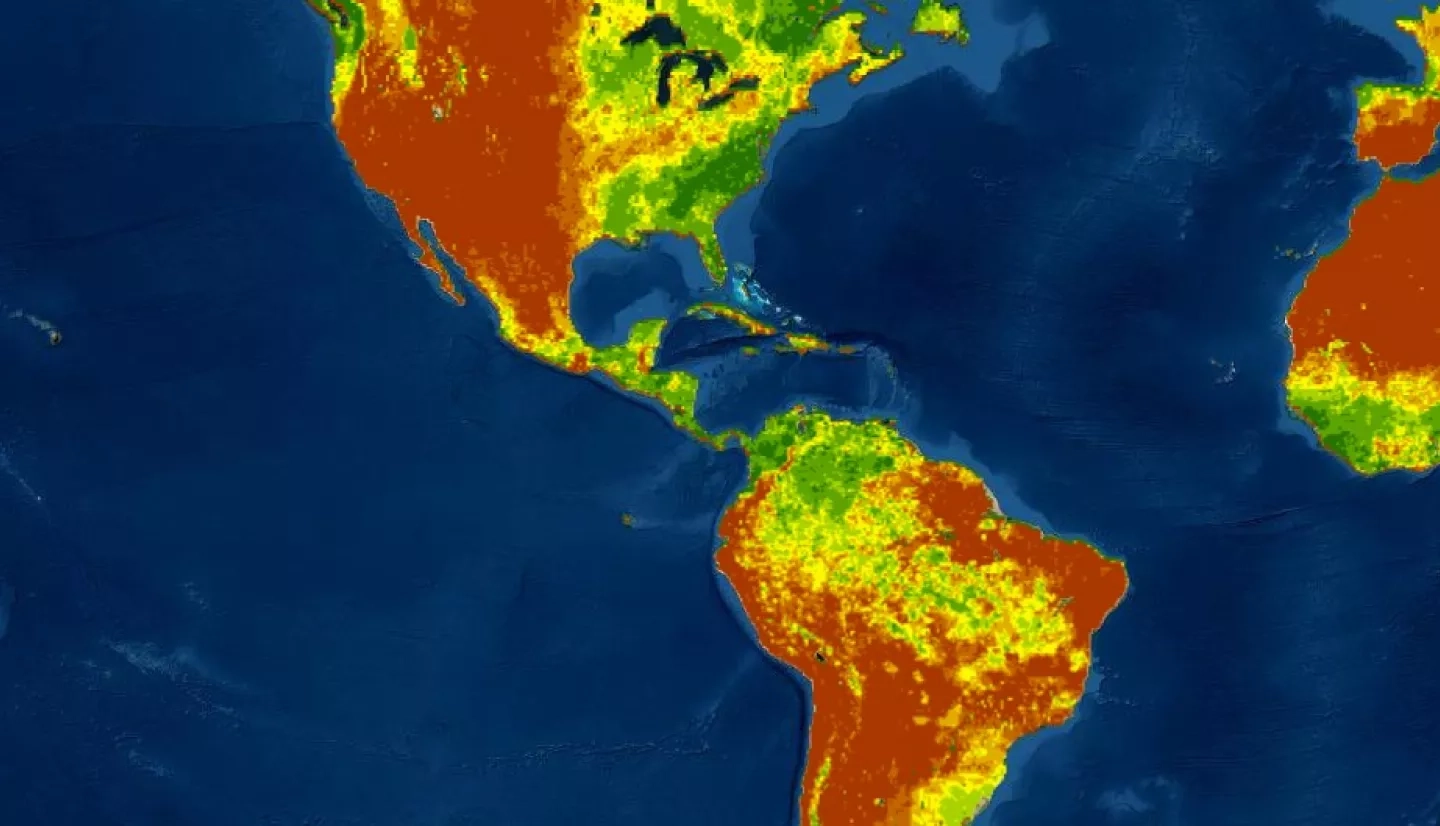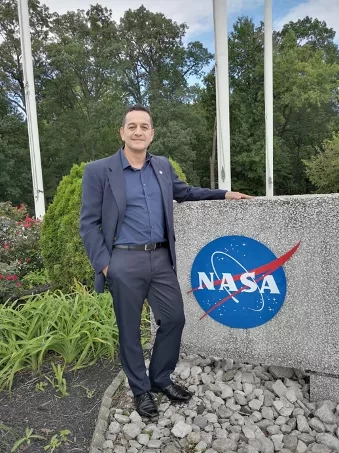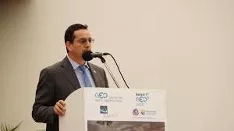NASA Disasters program coordinator Ricardo Quiroga is featured in the NASA Science Live television program Celebrating Hispanic Heritage.
Born and raised in Colombia, Ricardo Quiroga's inspiration are the country's forests which are filled with some of the most unique biodiversity in the world. Quiroga spent much of his youth roaming through the forests and admiring the various species of birds that live among the treetops. Because of his upbringing, he knew he wanted a career working with the natural world from a very young age.
“The passion for ecosystems and biodiversity brought me into the world of science.”
Quiroga went on to co-found of AmeriGEO in 2014. Coordinated with the worldwide Group on Earth Observations (GEO) in Colombia, it works in North, South and Central America on GEO Initiatives and programs in disasters, agriculture, health, water, biodiversity and ecosystems, and the use of Earth observations for decision-making in general. Quiroga came to the organization having graduated from the School of Veterinary and Animal Science in Colombia, and then receiving his Master's degree in Ecosystems and Sustainable Development in Costa Rica. Post-graduation, Quiroga worked for a system of national parks in Colombia which sought to protect the Amazon rainforests at the border area of Brazil, Colombia, and Peru, and to conserve the territories of indigenous tribes that have no contact with outside civilization.
AmeriGEO
AmeriGEO focuses its efforts on four "Societal Benefit Areas" as decided by its members.
- Agriculture, associated with climate variability, climate change, and food security.
- Disaster risk reduction, particularly for data exchange associated with early warnings and for the generation of regional products of early warnings.
- Water, associated with the management approach of water resources and data management.
- Biodiversity and Ecosystem Monitoring, including biodiversity observation in coastal, marine, and continental habitats, in the context of capacity building for better monitoring, management, and maintenance of ecosystems and biodiversity they support; also to predict future changes.
The Disaster Risk Reduction group of AmeriGEO collaborates with NASA's Earth Applied Sciences' Disasters program to promote disaster resilience in the American countries.
Collaboration Between AmeriGEO and NASA
As one of the two AmeriGEO Disasters Working Group co-leads, Quiroga acts as a focal point for the engagement of internal and external stakeholders and international organizations and processes relevant to Disaster Risk Reduction in the Americas. He works to promote the value of NASA Earth observations and information to key stakeholders and partners by establishing disaster-risk reduction initiatives across the Americas and links to other global regional activities.
"The goal of the NASA and AmeriGEO collaboration is to lead and promote the use of Earth Observations from a variety of sources in a coordinated and timely manner for disaster risk reduction and building resilience in the Americas,” he said.
The most challenging aspect of Quiroga's career is working in an environment that is very politically and socially dynamic, where processes can be rapidly affected by political and economic changes.
“A collaborative process can suddenly change actors, so ways to adapt [in order] to achieve success in proposals and initiatives must be found,” he said, adding that being able to help the countries in the Americas to improve their disaster risk management through the exchange of science and technology makes up for challenges.
"Knowing that we contribute to saving people's lives and assets in the Americas is very rewarding.”
Currently, Quiroga’s team is working on several different projects that will benefit the response, resilience and recovery processes of North and South American countries in the long term. Some of these projects include the implementation of a flash flood program in Central America, the development of fire behavior modeling technology for wildfires in Guatemala and the creation of geological risk supersites and natural laboratories in the Americas.
One technique his team uses to bring these projects to light is, “virtual and augmented reality to facilitate the understanding of event impact scenarios to decision-makers."
Looking Toward the Future
When asked about the future trajectory of NASA and AmeriGEO’s collaboration, Quiroga said, “The great challenges that we face, as a civilization in the face of disasters that know no boundaries, require ever closer collaboration that embraces multiple approaches of reducing the risks of disasters on an increasingly populated planet with increasingly critical environmental challenges.”
Quiroga will continue to look into collaborations and multidisciplinary solutions to complex environmental problems across the Americas. He is also looking to NASA to continue to serve as an organization that brings together the ideas and skills of others and uses them to create solutions to the world’s problems.
“NASA has a strong name in the international scientific community and can play the role of coordinating actions among organizations - global, regional, and local - using science and technology to create resilience to the major challenges that disasters pose in the Americas.”






